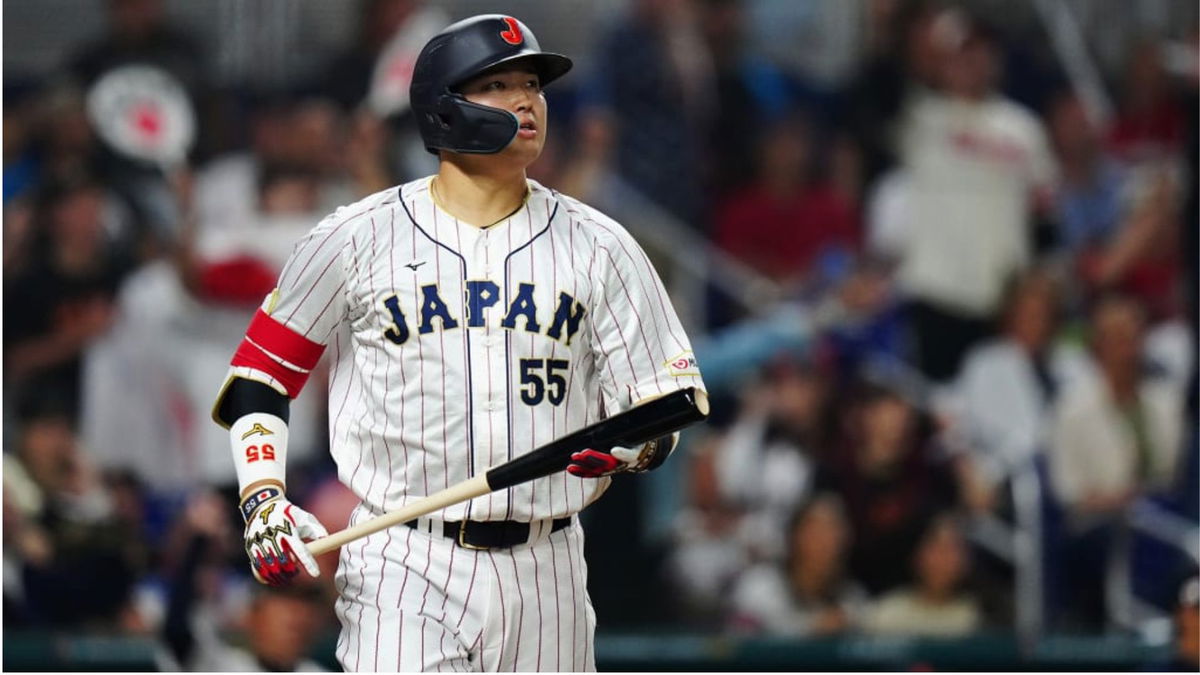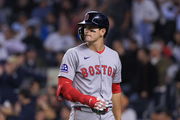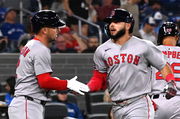
Imago
Source: IMAGO

Imago
Source: IMAGO
“He has legit power. It should translate to the Majors.” Said one of the scouts for the 25-year-old Japanese slugger, Munetaka Murakami. His name is all over the MLB rumor mill for this winter. And who is sitting in the front seat in that mill? The Yankees. Yet an insider who has been analyzing games for years says he might not be a good fit in the Pinstripes. If not him, then who? Well, it’s another Japanese sensation.
Watch What’s Trending Now!
Murakami, who delivered 22 home runs with 47 RBIs and a 1.043 OPS in just 56 games during an injury-shortened 2025 campaign, flashed the kind of power that made him a household name. His 2025 season showed he still possesses the devastating bat that once terrorized NPB pitching. He has slugged 265 home runs in 1,003 games, with a high of 56 in 2022 that set an NPB record for a Japanese-born player.
But a recent post by Randy Wilkins of ESPN dismissed the idea of signing Munetaka Murakami on X. He wrote, “If there is a Japanese player that Yankees fans would like on the team, they should want Okamoto, not Murakami.” What was once a straightforward Murakami-to-Yankees narrative has now expanded to include another elite Japanese talent.
ADVERTISEMENT
If there is a Japanese player that Yankees fans would like on the team, they should want Okamoto not Murakami.
— Randy Wilkins (@pamsson) October 18, 2025
According to NPB records, Kazuma Okamoto appeared in 69 games in 2025, logged 251 at-bats, collected 82 hits (including 21 doubles and 1 triple), and hit 15 home runs, driving in 49 runs while posting a slash line of .327/.416/.598. League projections place Okamoto’s potential contract in the $50 million range, making him a substantial but potentially more strategic investment.
The 29-year-old brings something Munetaka Murakami doesn’t: platoon value. His success against left-handed pitching addresses a specific Yankees weakness, creating opportunities for strategic deployment.
ADVERTISEMENT
MLB reporter Chris Kirschner elaborated on this exact point. He stated, “I know Murakami is a popular target for fans. I don’t see that happening. Ben Rice is the first baseman next season. Giancarlo Stanton is the DH. There’s no spot for him. Depending on how his market develops, Kazuma Okamoto makes sense. He hits lefties well, which the Yankees will need. He can play first and third. He has power and good contact rates. However, he may want a team offering more consistent playing time.”
The NYY outfield situation is changing right now. Aaron Judge is a steady presence, Ben Rice is at first base, Ryan McMahon is at third base, and Giancarlo Stanton is the DH. The Yankees have a big choice to make: do they go after Munetaka Murakami’s star power or Kazuma Okamoto’s fit and flexibility?
ADVERTISEMENT
The skepticism doesn’t stop there. Additional insider voices have emerged with deeper concerns about the Murakami pursuit.
Mismatch alert: Why the Yankees should pass on Murakami
While the headlines celebrate Munetaka Murakami‘s power potential, a deeper dive into his recent performance metrics and scouting evaluations reveals potential red flags that could make him a risky fit for the Yankees’ roster construction and competitive timeline.
ADVERTISEMENT
Even while scouts are excited about Murakami’s power potential, a closer look at his recent stats and reports shows that he may not be a good fit for the Yankees’ needs or the way they build their squad.

Imago
Munetaka Murakami N-55 of Japan during the game Japan vs Mexico, corresponding to the Semifinals of the 2023 World Baseball Classic, at LoanDepot Park, Miami, Florida, on March 20, 2023. brbr Munetaka Murakami N-55 de Japon durante el juego Japan vs Mexico, correspondiente a Semifinales del Clasico Mundial de Beisbol 2023, el el LoanDepot Park, Miami, Florida, el 20 de Marzo de 2023. World Baseball Classic 2023 Japan vs Mexico Semifinals PUBLICATIONxNOTxINxMEXxCHNxRUS
SIS tracked Murakami’s contact rate in the Japanese league and found that it was 63.9%, whereas Giancarlo Stanton’s was 65.1%. One insider said, “How does anyone think this is a big bat?” because the average fastball in the NPB is more than 1 mph slower than in the MLB. This means that Murakami’s raw power is unquestionable, but he might be at a big risk of not being able to regularly hit pitches with major-league speed and quality.
ADVERTISEMENT
Swing-and-miss tendencies and falling walk rates are also worrying. An executive from the American League told MLB.com, “He has big power, but there appear to be a lot of holes in that swing.” That kind of assessment from a front-office voice raises fundamental issues about whether the upside is worth the time and money spent on development and the chance to add players to the roster.
Top Stories
Red Sox Make Huge Roster Powerplay as Craig Breslow Positions for Alex Bregman Pete Alonso Decision

Blue Jays to Ditch Bo Bichette as Scott Boras’ “Mouthpiece” Drops Cryptic Take Amid Kyle Tucker’s Toronto Links

Yankees’ Cody Bellinger-Kyle Tucker Pursuit Written off by NY Insider, Thanks to Hal Steinbrenner’s ‘Cheapness’

Roman Anthony Drops 3-Word Savage Response After Sonny Gray’s ‘Hateful’ Dig at Yankees

Red Sox to Sacrifice Gold Glover for $116.5M Star as Alex Bregman Talks Grow Unstable, per Insider

The Yankees should think twice about giving a big contract to a player who may need time to adjust. If Murakami’s swing needs work, trading him could disrupt the team. Despite his stats, he may not be the best fit due to contact issues and swing mechanics.
ADVERTISEMENT
ADVERTISEMENT
ADVERTISEMENT
ADVERTISEMENT

